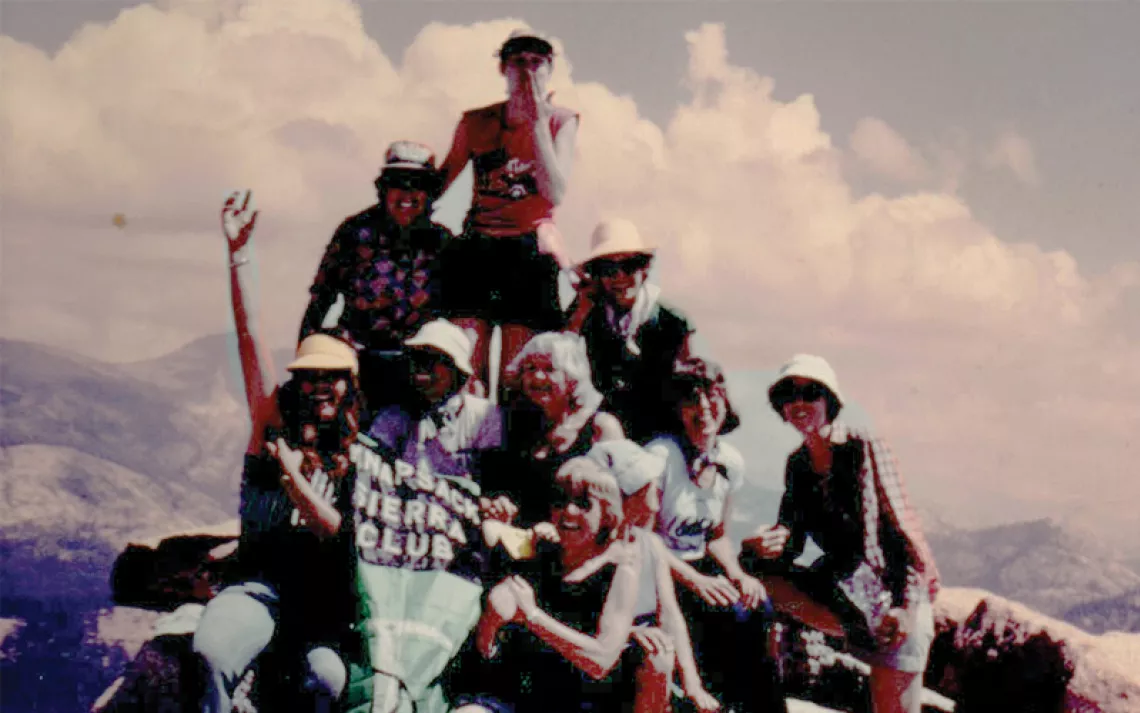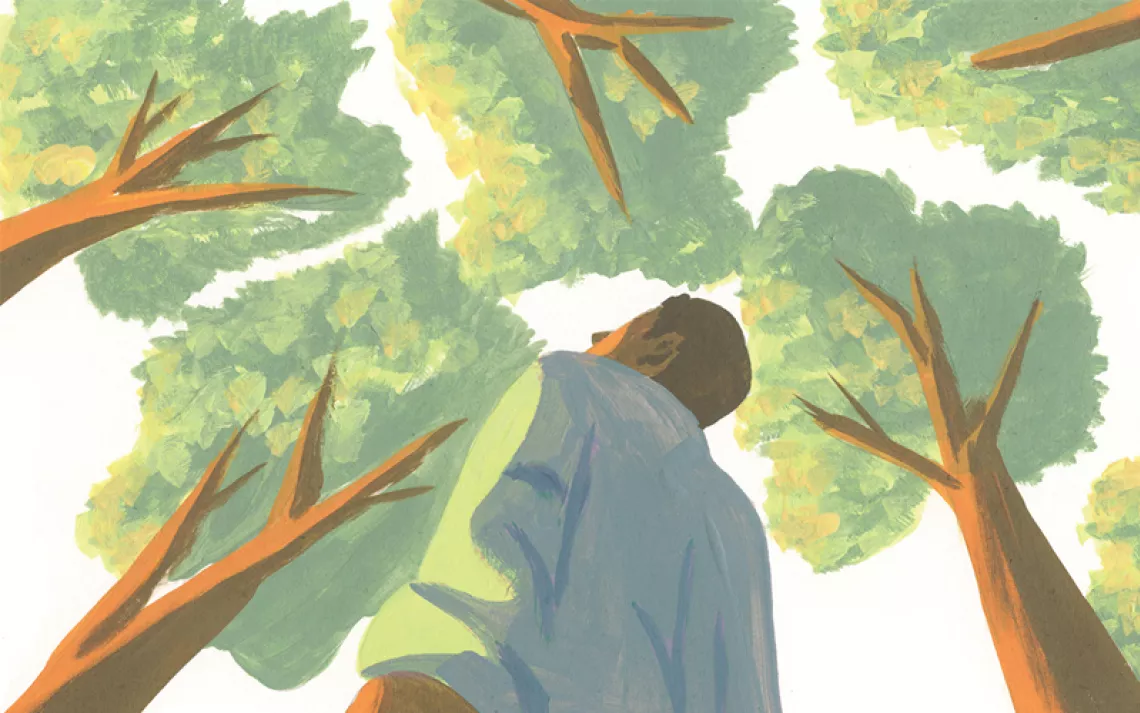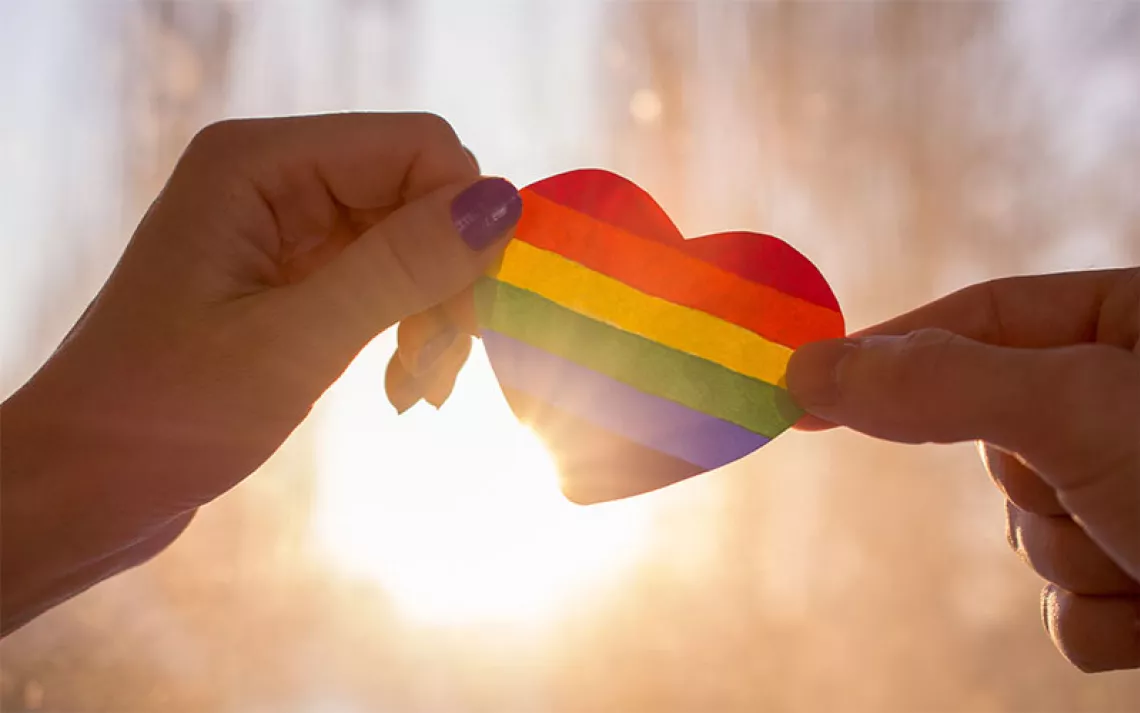To the Mountaintop
A team of black climbers blazes a new kind of trail on Mt. Denali
Photography by Hudson Henry
Last June, a group of 19 mountaineers flew over arctic tundra, past miles of shocking greenery and blinding ice, to a 7,200-foot base camp on the Alaska Range. They'd come to tackle Denali, the highest mountain in North America. The climbers, brought together by the National Outdoor Leadership School (NOLS), had first met each other about two years before and had spent weeks training for the 22-day journey. They had come from New York, Pennsylvania, West Virginia, Wyoming, California, Washington, and Kenya determined to bring something new to this snow-white highland: color.
To mark the 100th anniversary of the peak's first ascent, the African American and African climbers pushed for the summit with ice pick in hand and desire in heart. Sierra spoke with five members of Expedition Denali about why they signed up, why the trip matters, and what it was like to climb one of the world's most challenging peaks.
Erica Wynn, Queens, New York, 22 (student at American University): I am originally from Queens and had never slept in a tent until about a year ago. I had this dream about the end of the world. I was with my family in New York, and aliens descended from the heavens. They took us to the mountains and left us there. And I thought, "I need to learn how to survive." I woke up and turned to my roommate and was like, "Yo, I just had this crazy dream, and I feel like I need to take a backpacking course." And she told me about NOLS.
Scott Briscoe, San Francisco, 41 (community activist): I remember when I was younger, my grandfather would take me out to the forest, and we would cut wood. Those are my first memories of my love for being outside. I'm 41 now, and my heart still races whenever I'm in the outdoors.
Stephen Shobe, Laguna Hills, California, 57 (managing director of Pioneer Climbing Expedition, cable maintenance technician): Years ago, I was out in Big Bear, California, with my friend David. Me and him, man, we've gotten into a lot of mischief, done a lot of crazy stuff. We were at this place called the Falls, and I saw this huge rock with this giant crack in it. It had to be like 70 feet. I started climbing—no gear, no nothing. I was almost at the top, had one more push, just needed to get my foot in this little crevice. But I couldn't do it for nothing. I looked down and was like, "Um, David, I'm in trouble." I grabbed the shoe off that foot and threw it down to David. Took the sock off too. Put my big toe in that little hole and pushed myself up. Man, my heart was pounding so fast standing on top of that rock. I looked around and thought to myself, "Yeah! I like this!"
James Kagambi ("KG"), Naro Moru, Kenya, 52 (owner of KG Mountain Expeditions, outdoor instructor with NOLS Africa): Where I live in East Africa, you see a lot of people in the outdoors, but not necessarily for fun or recreation. Most of them just live there, or they are just doing it to make money, since they know that tourists like this stuff. The outdoors as recreation is seen as a waste of money for many natives. It is for the wazungus—that is what we call white people in Bantu. It means "wanderer." I have a guiding company in Kenya. It isn't big. I don't get a ton of people. But every time I think of closing it, I remember that for every one client who hires me, I use five or so people to help me as guides, drivers. So five or so Kenyans get employed, which helps feed five families.
Rosemary Saal, Seattle, 20 (traveler): Growing up in Seattle, I was involved with this program for girls called Passages Northwest [now called Girls Outdoor Leadership Development]. We would go rock climbing and on mountaineering trips. I was like, "This is awesome!" And I was always with a really diverse group, because fortunately the program gave a lot of opportunities to inner-city girls and girls of color. I was introduced to diversity in the outdoors before I even knew about the stigma of people of color not being out there. It just seemed natural to me. But I've always loved the way climbing feels. Pulling yourself higher and higher until you reach the top—it's like you are always reaching for the next step.
Briscoe: The people who signed up for Expedition Denali first got together about two years ago in Lake Tahoe. For some of us, it was the first time we'd seen faces that looked like ours in the outdoors. The official training course was in Mt. Baker in Washington, where we did a summit attempt.
Shobe: A lot of people dropped out when they realized they couldn't follow the training routine.
Wynn: Someone from the original team had dropped out, and they wanted to know if I was interested in joining. It was like the universe was talking to me. There was no way I could turn from the challenge. I was terrified, but the only things you regret are the opportunities you don't take.
Kagambi: I first summited Denali in 1989. I was the first native African to do so. But this trip was different from my other climbs. We had a goal that stretched further than summiting. We wanted to inspire people of color.
Wynn: We understood that summiting Denali would be hard. It was always an "if." We were realistic about it, but very hopeful.
Shobe: I was the first one to arrive in Anchorage. After everybody else trickled in, we took a bus to the city of Palmer, about 45 minutes away. We spent a couple of days at the NOLS branch there, then flew to the Denali base camp, which is at 7,200 feet. My first impression when I got on that mountain was "I am about to have my ass handed to me."
Briscoe: There was this incredible transition when we flew from the verdant colors of Palmer over the Talkeetna Mountains, then over the tundra, and then into the Alaska Range. I can't do justice to the grandness of the mountains. It's beyond big.
Kagambi: I really liked the team. I am pretty shy, so at first I was nervous, because I haven't been in a lot of black communities in the U.S. But I had no problems on Expedition Denali.
Briscoe: We were at base camp for two nights. We were constantly hearing avalanches. The camp was situated away from the avalanche zone, but you're still able to hear them. There was so much light because of the snow and the ice.
Shobe: Our tent teams were the same as our rope teams, so there were three of us in the tent. We all became very familiar with each other.
Briscoe: The Kahiltna Glacier, which is the glacier we moved to from base camp, is the longest glacier in the Alaska Range. It's 44 miles long. When we moved up beyond 10,000 feet, you could just look back and see this massive frozen river meandering down through the mountains into the green tundra. When we moved from 7,800 feet to the camp at 11,000 feet, that was the first time I felt the altitude in my lungs.
Saal: Everyone on the team had that moment when they felt that they couldn't do it. But we were able to push through.
Briscoe: We had some really beautiful days at base camp, but everything changed when we moved to the 11,000-foot camp. It got a little eerie in that there was a crevasse right through camp. It was close to where a Japanese team had perished the year before in an avalanche. There were five of them, and only one survived. So it was a camp where we really had to be cautious, and it made you realize the risk of the mountain. The whole game changes at 11,000 feet. We went around what's called Windy Corner, which is kind of this treacherous catwalk that's about 2 feet wide, and you're hauling a sled behind you. These boulders came down as the first group of four were going by, and seeing it from a distance, it was terrifying. Luckily, the rocks moved right past them. It was surreal. Moving from 11,000 to 14,000 feet was another moment when we were touched with the reality that the mountain was really making all the decisions and determining for us the routes we had to take.
Saal: The climb to the 14,000 camp was mostly smooth, until the last few hundred yards. Those were tough! Everyone was pooped and had to slow the pace a bit. Reaching that camp was a magical feeling after all the hard work—and especially since it was such a cool spot. The weather kept us there for eight days. At first I was like, "Yeah, we're resting. This will be great." But then I started to feel like I was losing my mojo.
Briscoe: The 14,000-foot camp was beautiful, but not just in the aesthetic sense. Another team was there with Jon Krakauer; [climber and author] Conrad Anker; Phil Henderson, an Everest climber who, with Conrad, attempted to be the first African American male to summit Everest; and [snowboarders] Ryan Hudson and Jeremy Jones. Conrad specifically set up his trip to meet up with the Expedition Denali team in support of our message. It was the night of the solstice, and we had a solstice party with all of them. There was an incredible feeling of inclusion—we were just part of this big mountaineering community. To have other mountaineers come over to our camp and converse with us—to have this sense of normalcy—that was really important to me.
Saal: That team could have done a show on the Food Network with the kitchen they had set up. We had a drum circle with pots and pans. We were singing and dancing. It was just a really good time.
Kagambi: There is this song called "Kata, Kata." The word kata literally translates to "cut," but it also involves dancing. Like one dance move is a "kata." So we would play this game on Denali. I would call, "Kata, Kata," and that means I am telling everyone to dance. And when I say your name, you have to go in the middle and do the dance that I tell you to. It was something to get our minds off the climb.
Saal: The first time we tried to move from 14,000 feet to the camp at 17,000, that was my hardest day. The packs were crazy heavy. And it was the steepest part of the whole climb. I kept calling "yellow," which means to slow down, and "zero," which means to stop. People were telling me the window of time was short because it was really hot and they were worried about rockfall and icefall. They were like, "Rosemary, we need to go now and hustle or turn around." I really didn't want to be the one to turn everyone around that day. But I just could not do it. That was one of my biggest insecurities going into the expedition—I didn't want to be that person. But it turned out I was that person that day. When we turned around, they kept trying to make other excuses, like the weather was bad, or we'd started too late. But I knew it was because of me. I cried the whole way back to 14,000 camp.
Wynn: On the mountain, I was really focused on being present and living in the moment, riding the emotions. I remember being so exhausted and thinking, "I really don't want to carry all my crap up this wall again." And just taking the moment to feel that, because I knew I was going to just get up the next morning and do it anyway. It was just a really long, exhausting day. The next day we were successful—it felt good to make it closer to the summit.
Briscoe: The last day before our summit day, I was talking with my tentmate Stephen Deberry. He was like, "Scott, what can I do to get you to the top of that mountain?" I told him, "Steve, I am already at the top. I was at the top when the team met for the first time in Tahoe."
Wynn: Summit day was pretty damn memorable. We woke up that morning to beautiful blue skies. We were like, "Oh my God, it's in the air. We're going to do it." We made it to this area called the Football Field. This is around 19,600 feet. We had one more hill left, one more push. We could see the summit. And then these clouds roll in.
Briscoe: It was so dramatic. The clouds engulfed the summit. Thunder and lightning struck. I've been scared two times in my life, and that was one of them. I held my ice ax up a little bit and could hear it buzzing from the electricity in the air. I remember looking at the instructors. They had this moment, I could see, where they were thinking, "What are we going to do?" and "Is it worth moving on?" And just as quick as that thought came, it left. They just said, "Let's go," and we turned around.
Kagambi: Usually I have very high summiting success, but there comes a time when you cannot compete with the mountain. The mountain has its own way of giving us feedback, of letting us know it is tired of us right now. And we had to respect that.
Wynn: I never felt such a letdown. I know I am not supposed to say that. But we were so close. And for me, just learning how to deal with that—I guess, like, what other people call failure. Learning how to take pride in that was hard.
Briscoe: I was not disappointed at all. There are many components to the experience on Denali. It was beautiful. It was hard. It was rewarding. It was never about the summit; it was about what we were doing to inspire the black community.
Shobe: You know, for over a decade I've been trying to encourage diversity in the outdoors, and I'm happy that groups like NOLS are catching on. But at the end of the day, the mountain, the outdoors—it doesn't really care if you're black, white, blue, or green.
Saal: Now that it's all over, I feel so empowered. I've been saying that word all the time lately. On my Twitter, I'm like, "I am so empowered. Empowered, empowered, empowered." After something like that, you think to yourself, "If I can do that, I can do anything."
 The Magazine of The Sierra Club
The Magazine of The Sierra Club









